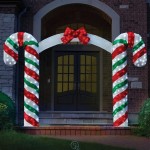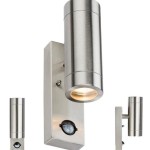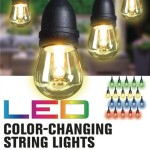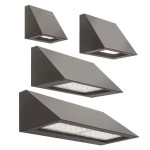Outdoor Lighting Design Guide: Essential Aspects for Creating a Stunning Exterior
Outdoor lighting not only enhances the aesthetics of your property but also provides safety and security. A well-designed outdoor lighting system can create the perfect ambiance, extend the usability of your outdoor spaces, and deter unwanted visitors. Here's a comprehensive guide to help you design an effective and beautiful outdoor lighting system:
1. Purpose and Function
Determine the primary purpose of your outdoor lighting. Whether it's ambiance, safety, or security, knowing the function will guide your design choices. Consider the areas you need to illuminate, such as pathways, entrances, and seating areas. Also, think about the level of brightness and visibility required.
2. Types of Lighting Fixtures
There are various types of outdoor lighting fixtures available, each serving a specific purpose. Bollard lights provide upward illumination for pathways. Floodlights illuminate larger areas, while spotlights highlight focal points. Consider path lights for decorative and functional lighting along walkways. Wall-mounted fixtures add ambient light to walls and facades.
3. Light Placement and Layout
Careful placement of lighting fixtures ensures optimal light distribution and minimizes unnecessary glare. Avoid placing lights directly in front of windows or doors. Instead, use layers of lighting with different heights and angles to create depth and interest. Consider the height of objects and foliage to avoid obstructing light.
4. Light Color and Temperature
The color temperature of light affects the mood and atmosphere of your outdoor space. Warm light (2700-3000K) creates a cozy and inviting ambiance, while cool light (4000-6500K) provides brighter illumination for safety and security purposes. Choose the appropriate color temperature based on the desired effect.
5. Energy Efficiency and Sustainability
Incorporate energy-efficient lighting fixtures, such as LED or solar-powered lights, to reduce energy consumption and carbon footprint. LEDs provide long-lasting, high-quality light while consuming less energy. Solar-powered lights harness natural sunlight, eliminating the need for electricity.
6. Smart Lighting Features
Smart lighting technology offers convenience and customization. Wi-Fi-enabled outdoor lights allow remote control, scheduling, and dimming. Motion sensors automatically activate lights when movement is detected, enhancing security and saving energy. Consider smart lighting features to enhance the functionality of your outdoor lighting system.
7. Maintenance and Upkeep
Regular maintenance is essential to keep your outdoor lighting in optimal condition. Clean fixtures regularly to prevent dirt buildup and ensure proper light output. Replace bulbs promptly to maintain brightness levels. Inspect wiring and connections periodically to address potential issues before they become major problems.
Conclusion
Creating a beautiful and functional outdoor lighting design requires careful planning and attention to detail. By considering purpose, fixture types, placement, light color, energy efficiency, smart features, and maintenance, you can design an outdoor lighting system that transforms your property into a safe, inviting, and stunning space. Remember to consult with a professional lighting designer for complex projects to ensure the best possible outcome.

Résultats De Recherche D Images Pour Landscape Lighting Plan Outdoor Garden Design

Landscape Lighting Design Overview
Walnut Ridge Cer Association S New Outdoor Lighting Design Guide For 2024 Released

A Guide To Outdoor Lighting Design Rtf Rethinking The Future

Design Guide For Your Home S Outdoor Lighting

Landscape Lighting Design Guide Everything You Need To Know

Outdoor Lighting Guide Delmarfans Com

A Guide To Outdoor Lighting Design Rtf Rethinking The Future

A Guide To Outdoor Lighting Easy Follow Tips Make The Most Of Your Garden

A Guide To Outdoor Lighting Design Rtf Rethinking The Future
Related Posts







